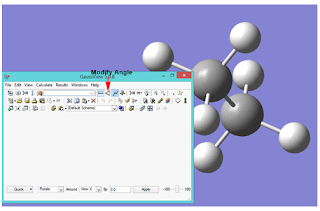Step
II
"Synthesis
of Anthranilic Acid from Pthalamide"
Chemicals
Required:
- Phthalamide
- Bromine
- Sodium hydroxide
- Conc. HCI
- Glacial acetic acid
Theory:
The most Common migration rearrangement
reactions involve migration of atom or group of
atoms from one atom or group of atoms i.e. 1-2 Shift.
A group may migrate to an e deficient carbon,
nitrogen, oxygen, to e- rich Carbon.
The Species which migrate may be an atom
or a group a sigma bond.
Classification
of
Rearrangement:
Depending on electronic nature of
migrating unit.
A rearrangement may be classified as
follows,
(a)
Nucleophillic or Aniontropic Rearrangment:
Aniontropic Rearrangment is where the
migrating group migrate along with the electrons pair to
electron deficient center.
(b)
Electrophillic or cationtropic Rearrangement:
Cationtropic Rearrangement is where migrating group migrate without
electron pairs to rich migarting center.
(C)
Free Radical rearrangement:
Free Radical rearrangement is where the
migrating groups changes its Position just with
one electron.
(d)
Sigma tropic Rearrangement:
Sigma tropic rearrangement is where the Cleavage or breakage of Sigma bonds occur simultaneously
through cyclic transitions.
(a)
Nucleophillic Rearrangement to an é- deficient Nitrogen:
The electron deficient nitrogen is first
generated by loss of alpha leaving group from
nitrogen atom.
Hoffmann
Re-arrangement:
There is a group related closely
rearrangement, which converts N-Substituted amides to
anthranilic acid. These migration involves migration of alkyl or aryl group from adjacent carbon to e-deficient Nitrogen.
Chemical
reaction:
Procedure:
I prepared sodium hypobromite by dissolving 7.5g of sodium hydroxide in about 40ml water in a conical flask. Then, I cooled the solution to 0oC in ice bath and then I added 2.1 ml of bromine to it with stirring. Then I added 6g of phthalamide in cold solution with stirring and then poured the solution in 5.5g "NaOH" in 20ml water. Upon this addition flask becomes hot. Then, I warmed the reaction mixture in water bath at 80oC for about 5 minutes. Then, I filtered it off. After that, I cooled the filterate in 500 ml flask containing crushed ice. Then, I added 15 ml HCL in filterate slowly with stirring untill the solution became neutral. Then, I added 5-6ml of glacial acetic acid acid. Finally, anthranilic acid was prepared.
Mass of pthalimide used = 6g
Molecular mass of pthalimide = 147g/mol
No. of moles of pthalimide = xm/M
6/147 = 0.04081 moles
Moles of pthalimide = 0.04081 moles
Amount of Br2 used = V =
2.1ml
Density of Br2 = 3.119 g/cm3
Density = mass/volume = m/v
d = m/v
=› m = dV =›
2.1×3.11
= 6.531g
Molecular mass of Br2 =
70g/mol
No. of moles of Br2 = m/M = 6.531/70 = 0.0933 moles
Moles of Br2 = 0.0933moles
Mass of NaOH used = 5.5g
Molecular mass of NaOH = 40g/mol
No. of moles of NaOH = m/M =
5.5/50 = 0.1375 moles
Moles of NaOH = 0.1375 moles
1eq of pthalimide = 1eq of Br2
= 1eq of NaOH = 1eq of anthranilic acid
0.04081moles of pthalimide=0.04081moles
of Br2=0.04081moles of NaOH= 0.04081 moles of anthranilic acid
So,
Moles of anthranilic acid = 0.04081moles
Molecular mass of antranilic acid =
137g/mol
Mass of anthranilic acid = n×M = 0.04081×137
= 5.59g
Theoretical yield of anthranilic acid =
5.59g
Actual yield of anthranilic acid = 3.2g
%age yield of anthranilic acid =
3.2/5.59×100 = 57.24%
Melting
Point:
The melting point of anthranilic acid is
145oC
Yield:
The Calculated amount of product is
theoretical yield. The amount of product actually obtained is actual yield and
when actual yield is divided by theoretical give obtained yield. It would give
expected product yield.


.jpeg)















.png)

